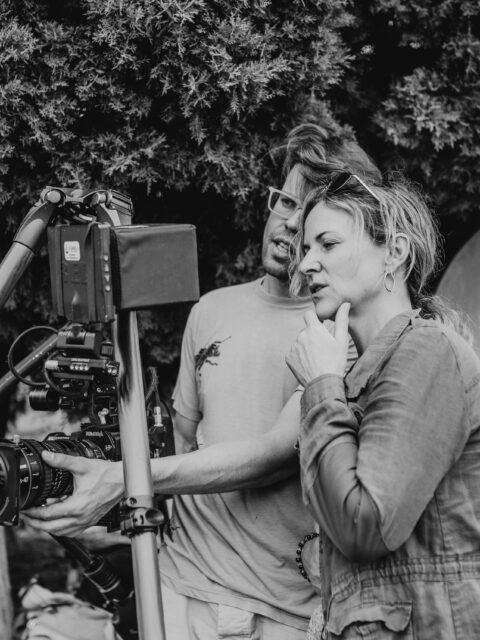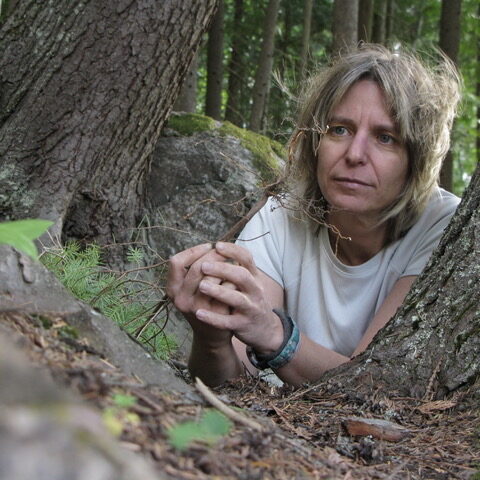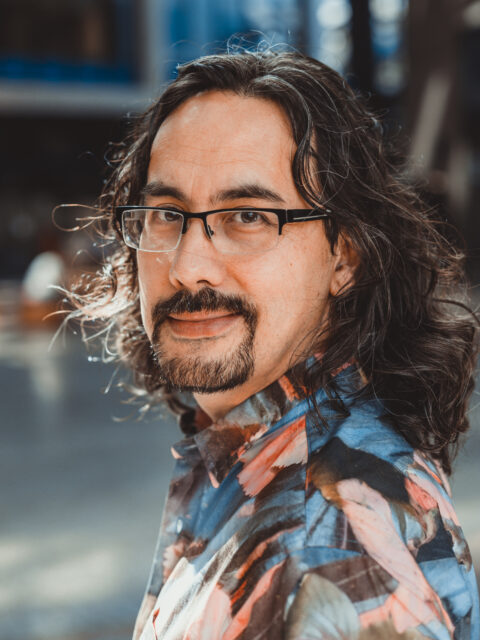The Forest That Breaths Us
Jennifer Abbott, Suzanne Simard & Jai Djwa / Canada
A virtual reality experience made collaboratively with ground-breaking forest ecologist Suzanne Simard, The Forest That Breaths Us transports participants into a perspective of unfathomable interconnection by taking them inside the complex communication networks, familial relationships, memories and agency of a forest.
The Forest That Breaths Us is a virtual reality experience within the unfathomably interconnected world of a forest. It merges storytelling, new media and the scientific breakthroughs of forest ecologist Dr. Suzanne Simard. Creating a visual and sonic universe based on her revelatory findings, participants leave the confines of their separate egoic selves by being transported deep inside the complex communication networks, memories and familial, interspecies and intergenerational relationships of a forest in the Pacific Northwest.
Though Dr. Simard’s findings were at first dismissed and even ridiculed, she’s now world-renowned with her research firmly supported by data and peer-reviewed science. She has established that trees have their own sort of language, memories and agency. They cooperate in communities of immense complexity and communicate through an underground network of fungi. At the centre of the forest stand the Mother Trees; majestic matriarchs that nurture the overall health of the forest. She calls trees “super-cooperators.” That cooperation extends to animals including insects, birds, salmon, bears and of course humans.
So how does one create a virtual reality world that allows participants to shed the reified experience of their separate selves and enter the profound complexity and relationality of a Pacific Northwest forest? It’s an especially monumental challenge given the perniciousness of our hyper-individualistic culture, reductionist science and the neoliberal commodification of virtually all of life. But it’s the foundational inquiry and experiment of The Forest That Breaths Us.
It strikes me that foundational to the creation of this world is to begin with a structure and focus on the relationship, not objects. I remember when my son learned to “see” as an artist. Instead of drawing objects, he started to draw the shape of light, the nuance of texture and washes of colour. Similarly for The Forest That Breaths Us, the focus will be taken off individual objects and will instead track relationships including cooperation and competition, symbiosis and parasitism, growth and decay, life and death. It’s a world of beauty and terror. It’s dynamic, complex, beautiful and mysterious. I anticipate capturing these relationships visually with 360 degree video through an experimental process of discovery. Similarly, sound design will emphasize relationships between varying frequencies, rhythms, pitches regardless of source as well as the creation of a soundscape that pulls participants into the dynamic flow of the forest. Participants will experience the forest as light, texture and flow within the fluidity of time and space as well as rich sonic diversity.
“All my relations,” the phrase that begins or ends many Indigenous prayers, recognizes our place in the universe as inescapably entwined with all other beings and all other things. The Forest That Breaths Us is a contribution to dominant culture’s shifting understanding of that fact. And that’s critical given the scale and violence of the social, economic and climate collapse we are witnessing today. When we understand our very being is entwined with all other humans, animals, forests, the planet and the stars, we can access a foundation to stand on, grace to guide us and a sense of deep kinship and belonging to this world.



